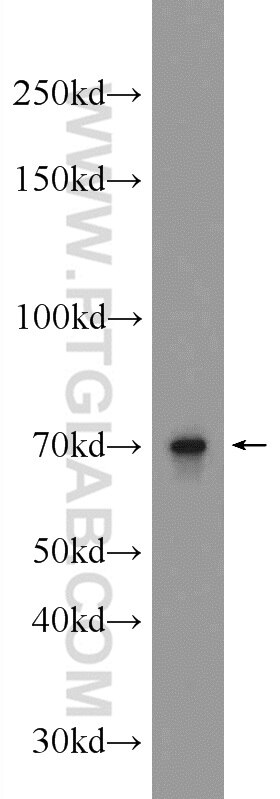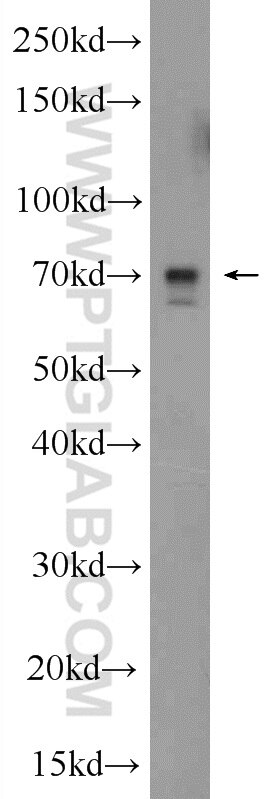Validation Data Gallery
Tested Applications
| Positive WB detected in | mouse testis tissue, HEK-293 cells |
Recommended dilution
| Application | Dilution |
|---|---|
| Western Blot (WB) | WB : 1:500-1:2000 |
| It is recommended that this reagent should be titrated in each testing system to obtain optimal results. | |
| Sample-dependent, Check data in validation data gallery. | |
Product Information
22358-1-AP targets ALX3 in WB, ELISA applications and shows reactivity with human, mouse samples.
| Tested Reactivity | human, mouse |
| Host / Isotype | Rabbit / IgG |
| Class | Polyclonal |
| Type | Antibody |
| Immunogen |
CatNo: Ag17937 Product name: Recombinant human ALX3 protein Source: e coli.-derived, PGEX-4T Tag: GST Domain: 1-152 aa of BC112007 Sequence: MDPEHCAPFRVGPAPGPYVASGDEPPGPQGTPAAAPHLHPAPPRGPRLTRFPACGPLEPYLPEPAKPPAKYLQDLGPGPALNGGHFYEGPAEAEEKTSKAASFPQLPLDCRGGPRDGPSNLQGSPGPCLASLHLPLSPGLPDSMELAKNKSK 相同性解析による交差性が予測される生物種 |
| Full Name | ALX homeobox 3 |
| Calculated molecular weight | 343 aa, 37 kDa |
| Observed molecular weight | 70 kDa |
| GenBank accession number | BC112007 |
| Gene Symbol | ALX3 |
| Gene ID (NCBI) | 257 |
| RRID | AB_2879088 |
| Conjugate | Unconjugated |
| Form | |
| Form | Liquid |
| Purification Method | Antigen Affinity purified |
| UNIPROT ID | O95076 |
| Storage Buffer | PBS with 0.02% sodium azide and 50% glycerol{{ptg:BufferTemp}}7.3 |
| Storage Conditions | Store at -20°C. Stable for one year after shipment. Aliquoting is unnecessary for -20oC storage. |
Background Information
ALX3 is a transcriptional regulator with a possible role in patterning of mesoderm during development. It is a paired-class aristaless-like homeoprotein expressed in different tissues during embryonic development. We always got 70 kDa dimer form in our detection.
Protocols
| Product Specific Protocols | |
|---|---|
| WB protocol for ALX3 antibody 22358-1-AP | Download protocol |
| Standard Protocols | |
|---|---|
| Click here to view our Standard Protocols |


